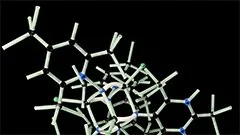Introduction
The genetic code is the set of instructions stored in DNA and RNA molecules that dictate the sequence of amino acids (the building blocks of proteins) within a polypeptide chain, thus determining the resulting protein's specific 3D structure and function. Understanding the genetic code is fundamental to comprehending how heredity works and how cells translate genetic information into functional proteins.
This course aims to provide an in-depth exploration of the genetic code, its deciphering, and its implications in molecular biology.
History of the Genetic Code Discovery
The journey towards understanding the genetic code began with Gregor Mendel's groundbreaking work on pea plants in the mid-19th century. However, significant progress was made during the 20th century, culminating in the elucidation of the genetic code by several scientists, most notably Crick, Watson, and others who proposed the double helix structure of DNA.
The Central Dogma of Molecular Biology
The central dogma of molecular biology states that information flows from DNA to RNA to proteins. DNA acts as a template for the synthesis of RNA molecules (transcription), and the RNA serves as a template for the synthesis of polypeptides (translation).
Transcription: From DNA to mRNA
Transcription is the process by which genetic information stored in DNA is copied into complementary RNA sequences. This process involves three main steps: initiation, elongation, and termination. During transcription, the nucleotide sequence of the template strand of DNA serves as a template for the synthesis of an RNA molecule called messenger RNA (mRNA).
Translation: From mRNA to Protein
Translation is the process by which the genetic information stored in mRNA is used to synthesize a protein. This process occurs in the cytoplasm and involves three main steps: initiation, elongation, and termination. During translation, the sequence of nucleotides in the mRNA serves as a template for the synthesis of a polypeptide chain using amino acids.
The Genetic Code: Rules and Mechanisms
The genetic code is a triplet (codon) language consisting of three consecutive nucleotides in an mRNA molecule that corresponds to a specific amino acid or a signal for the start or stop of protein synthesis. There are 64 possible codons (4^3), but only 20 encode amino acids, while the remaining codons serve as signals for initiating and terminating translation.
The Genetic Code Table
The genetic code table lists all 64 codons and their corresponding amino acids or functions. This table is universal across almost all organisms, with a few exceptions in mitochondria and some bacteria.
Modifications to the Genetic Code: Amino Acid Substitutions
Mutations in DNA can lead to changes in the genetic code, which may result in amino acid substitutions during protein synthesis. These substitutions can have various effects on protein function, from minor alterations in activity to complete loss of function. Understanding these modifications is crucial for understanding the molecular basis of diseases and evolutionary processes.
Conclusion
The genetic code represents an intricate language that encodes the instructions for life. By elucidating its rules and mechanisms, we have gained fundamental insights into heredity, development, and disease. As our understanding of the genetic code continues to grow, so too will our ability to harness its power in solving some of humanity's most pressing challenges.
MCQ: Test your knowledge!
Do you think you know everything about this course? Don't fall into the traps, train with MCQs! eBiologie has hundreds of questions to help you master this subject.
These courses might interest you
Create a free account to receive courses, MCQs, and advice to succeed in your studies!
eBiologie offers several eBooks containing MCQ series (5 booklets available free for each subscriber).




